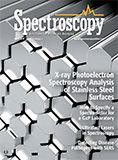Market Profile: Process Moisture Instruments
Measuring moisture at high or trace amounts in is an important parameter of many manufacturing processes including commercial food production, pharmaceutical, and chemical manufacturing or other industrialized fabrication setting.
Measuring moisture at high or trace amounts in is an important parameter of many manufacturing processes including commercial food production, pharmaceutical, and chemical manufacturing or other industrialized fabrication setting. Environmental changes in humidity (moisture in a gas) can alter the overall process that might lead to substandard products or failed quality assurance.
Determining the moisture content in gases, liquids, or solids has differing analytical challenges. Hydrocarbon processing, semiconductor, power plants, and natural gas industries rely on instruments to measure moisture in gas or liquids, while plastics and pharmaceutical industries need to control trace levels of moisture in solids. Process moisture instruments can be broadly categorized into three technology segments. Industrial relative humidity (RH) transmitters are industrial-grade instruments used in dryers and related process applications such as automotive paint-booths and pharmaceutical plant environments. Hygrometers/dewpoint instruments are used for trace moisture measurements in gases and liquids. And the last category is bulk material moisture content analyzers, which measure flowing materials sand, sawdust, fly ash, grain, powders, seed, and so on.
In terms of market share for the three technologies, the overall value is somewhat split evenly. Industrial RH transmitters are less expensive than the other technologies, so many more units are sold than the other two technologies.
Continuous process industries account for the majority of the market. Petrochemical and chemicals segment represented about 40% of the 2017 demand. Robust growth is expected from pharmaceutical and biotechnology industries, which accounted for about 11% of the market. Other continuous process industries (for example, agriculture and food, metal and mining, semiconductor, and so on) are providing solid growth, as well. GE and Michell instruments are the leading suppliers of process moisture instruments. GE offers industrial RH, chilled mirror hygrometers, and aluminum oxide moisture instruments. Michell Instruments is the largest dew-point transmitter manufacturer in Europe. Other suppliers include AMETEK, COSA+Xentaur, and Thermo Fisher Scientific.
2017 North Americanmoisture instruments demand by end-market

In 2017, the market for moisture instruments used for process online monitoring accounted for more than $50 million in North America. Good growth is expected over the next few years, but the use of tunable diode laser (TDL) and cavity ring-down (CRD) spectrometers are becoming more prevalent, particularly for high-value, low-level moisture measurement applications in natural gas and semiconductor specialty gas analysis.
Market size and growth estimates were adopted from TDA’s Industry Data, a database of market profiles from independent market research company Top-Down Analytics. For more information, contact Glenn Cudiamat, general manager, at (888) 953-5655 or glenn.cudiamat@tdaresearch.com. Glenn is a market research expert who specializes in scientific technologies used in lab and process industries.

Market Profile: Mass, Molecular, and Atomic Spectroscopy
December 1st 2018Mass spectrometry, molecular and atomic spectroscopy technologies combine to represent more than a fifth of the overall market for laboratory analytical instrumentation. These techniques are perhaps the most broadly used instruments, with utility in pharmaceuticals and other life sciences, chemicals, environmental, food, clinical/Dx and other applications.